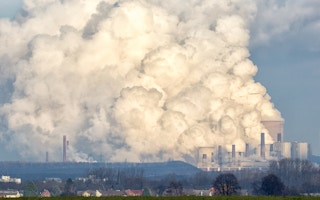Last December in Paris, 195 governments reached a consensus on how to curb climate change over the coming decades. But, as usual when it comes to the United Nations, the deal that was struck was big on stated ambition, but far more modest when it comes to commitments to concrete action.
To continue reading, subscribe to Eco‑Business.
There's something for everyone. We offer a range of subscription plans.
- Access our stories and receive our Insights Weekly newsletter with the free EB Member plan.
- Unlock unlimited access to our content and archive with EB Circle.
- Publish your content with EB Premium.
The Paris climate agreement includes a pledge to keep warming “well below two degrees Celsius above pre-industrial levels.” Furthermore, at the request of the world’s most vulnerable countries, language was added promising “to pursue efforts to limit the temperature increase to 1.5º.”
The trouble is that these aspirations are not matched by the commitments called for by the treaty. Instead, the agreement’s system of voluntary mitigation pledges will allow global emissions to rise until 2030, likely leading to a warming of 3-3.5º by 2100. This looks like a prime example of inconsistency in policymaking.
The problem lies, first and foremost, with the goals spelled out in the agreement. Targets like limiting warming to 1.5º or 2º cannot effectively guide policymakers and the public. They address the whole Earth system, not individual actors or governments.
By failing to state explicitly what individual countries are required to deliver, it allows leaders to support targets that seem ambitious, while pursuing mitigation efforts that are in reality insignificant.
No scientific formula can describe how to share the burden of global mitigation equitably among countries, leaving every government able to declare confidently that its policies are in line with any given temperature target.
An evaluation of whether the goals are being attained can be carried out only on a global level, and thus no country can be held responsible if the target is missed. As a result, every UN climate summit concludes with expressions of grave concern that the overall efforts are inadequate.
This has to change. The conventional approach is to call for more consistency between talk, decisions, and actions. But inconsistency is inherent to policymaking. Diplomats and politicians treat talk, decisions, and actions independently, in order to satisfy the demands of a diverse set of stakeholders and to maximize external support for their organizations.
In climate policy, most governments choose a progressive stance while talking and deciding, but a more cautious one when it comes time to act. Ambitious UN climate targets have not served as a prerequisite, but as a substitute for action.
“
No scientific formula can describe how to share the burden of global mitigation equitably among countries, leaving every government able to declare confidently that its policies are in line with any given temperature target.
This is no reason to give up on climate targets altogether. Complex long-term policymaking works only if ambitious goals are in place. But targets cannot be vague aspirational goals; they must be precise, evaluable, attainable, and motivating.
The Paris agreement itself offers one possible approach. Hidden behind a vaguely defined formula, a third mitigation target has been introduced: reaching zero emissions in the second half of the century.
A target of zero emissions tells policymakers and the public precisely what must be done, and it directly addresses human activity. Every country’s emissions must peak, decline, and eventually reach zero.
This provides a transparent system to evaluate the actions not only of national governments, but also of cities, economic sectors, companies, and even individuals. Defection would be discouraged because it is easy to see – and more important, to explain to the public – whether emissions are going up or down.
Such a target would put all new fossil-fuel-based infrastructure under intense scrutiny; if we need to drive emissions down, why build another coal plant or badly insulated building? A shared vision of zero emissions could even spark a race to cross the finish line first.
Sweden wants to be there by 2045. The United Kingdom has announced that it plans to come up with a zero-emissions target soon. Germany might follow, after its next elections.
Scientists prefer exact thresholds for climate stabilization, and policymakers like powerful symbols. That is why temperature targets dominate the global climate discourse. But history proves that this does not automatically lead to action. Replacing temperature thresholds with an effort to reduce emissions to zero would ensure accountability and minimize political inconsistency.
There is precedent for such an approach. The Montreal Protocol for protecting the ozone layer primarily addresses harmful substances, trying to accelerate their phase-out, rather than defining a stabilization target for the ozone layer.
The gap between real-world emissions and what will be needed to keep warming below the agreed-upon limits is rapidly widening. The UN has tasked the Intergovernmental Panel on Climate Change to conduct a detailed investigation of how to meet the – already unrealistic – ceiling of 1.5°C. This implies a risk that the world will waste valuable time on yet another debate about lofty goals.
Whatever our temperature target, global emissions have to peak soon and decrease afterwards – all the way to zero. The Paris climate agreement will be remembered as a success only if we manage to shift our focus from talk to effective action.
Oliver Geden is head of the European Union research division at Stiftung Wissenschaft und Politik, the German Institute for International and Security Affairs.
Copyright: Project Syndicate, 2016.
www.project-syndicate.org









